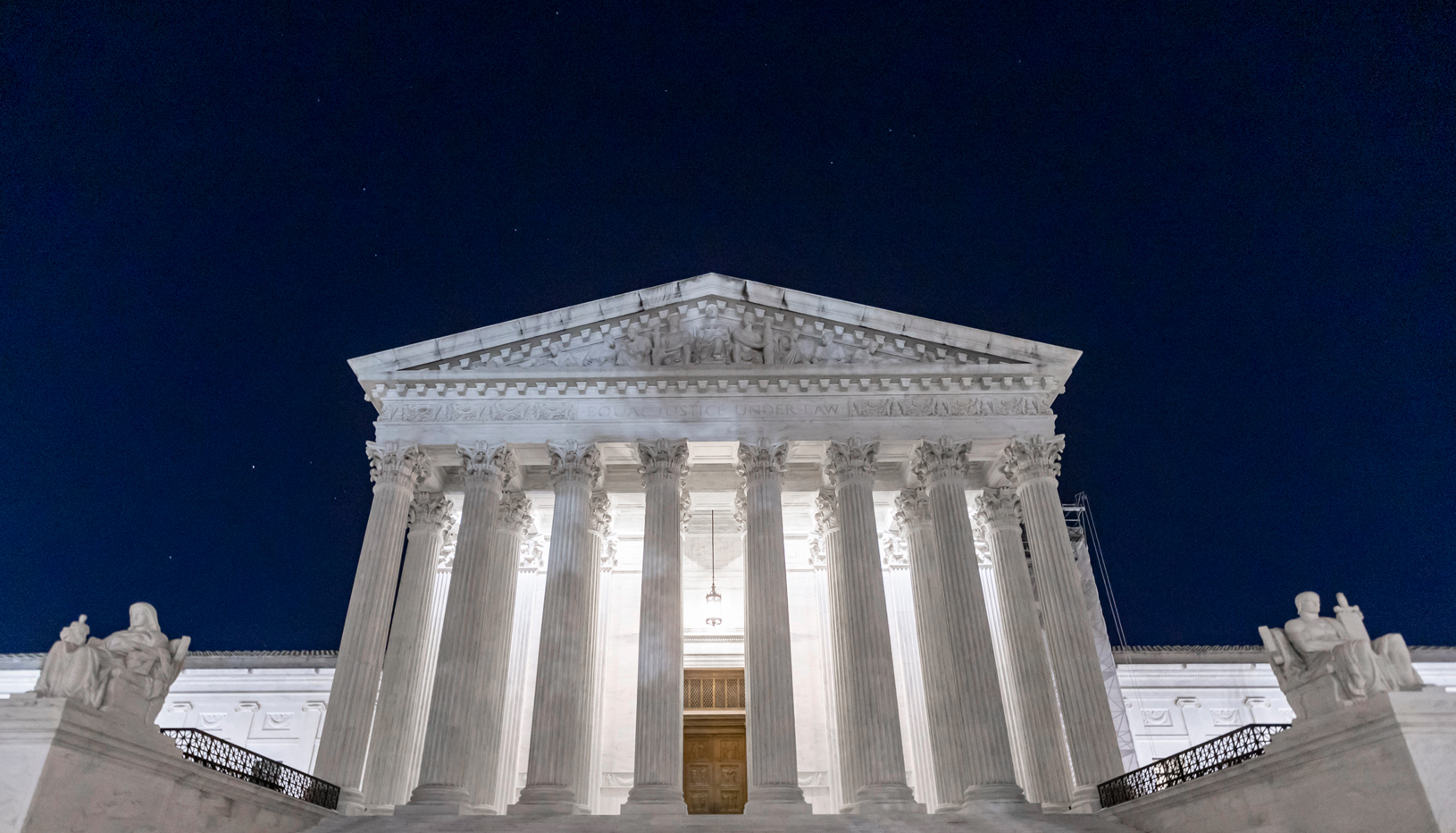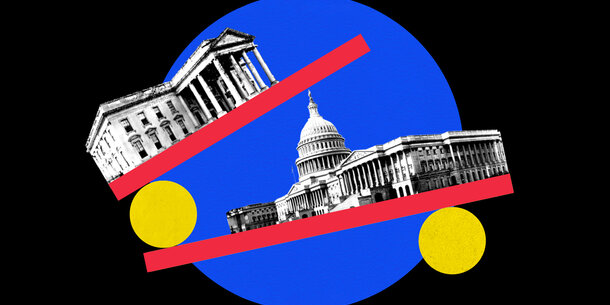You’re reading The Briefing, Michael Waldman’s weekly newsletter. Receive it in your inbox.
All knew that a great clash over presidential power would unfold at the Supreme Court this year. Donald Trump has smashed through laws and constitutional boundaries. What would the justices do?
They might cave and endorse this sweeping call for expanded presidential power. Or they might stand up for checks and balances. Perhaps they would try to avoid acting altogether. We had every reason to expect big debates and major rulings.
Instead, the justices found another path — a sneakier one. Repeatedly, they have let Trump amass vast new power, and they have done so without putting their names on it. They are proving willing accomplices to a constitutional coup, all without leaving a trace.
That’s what happened on Monday in a case involving the Department of Education. The Court permitted Trump to move forward with his plan to effectively shut down the federal agency created by Congress and embodied in decades of law. Two lower courts had blocked this effort. The Supreme Court overturned those decisions in an order, with not even a sentence of explanation. There was no public argument. Not a single justice would sign their name.
President Trump had urged Education Secretary Linda McMahon to “put herself out of a job,” having promised to abolish the department since at least 2023. (This is the same Linda McMahon, a former World Wrestling Entertainment CEO, who confused AI with the steak sauce A1 at a conference on artificial intelligence.) Trump followed up with an executive order purporting to dismantle the department.
But a president cannot just shut down an agency by fiat. Congress created the Department of Education in 1979 to ensure equal access to education and improve education quality across the country. The agency disburses $150 billion each year, all as approved by Congress.
Trump’s solution: If you can’t actually shutter an agency, just dismiss its staff. McMahon has already purged 1,300 employees, effectively reducing the department’s workforce by half.
The Court weighed in using the “shadow docket” — usually reserved for emergency cases, but more and more used to quietly rule on controversial questions with brief, often unsigned opinions.
Here, the justices never heard arguments. Just one friend-of-the-court brief was filed. The Court gave challengers only seven days to file papers. No explanation was offered either. “Owing to their unpredictable timing, their lack of transparency, and their usual inscrutability, these rulings come both literally and figuratively in the shadows,” explained Georgetown professor Steve Vladeck, the country’s leading expert on the shadow docket.
It was all over in the blink of an eye. We don’t even know how many votes this move got. The supermajority was silent.
We do know that Justice Sonia Sotomayor wrote a roaring dissent, joined by Justices Elena Kagan and Ketanji Brown Jackson. “When the Executive publicly announces its intent to break the law, and then executes on that promise, it is the Judiciary’s duty to check that lawlessness, not expedite it,” Sotomayor thundered. This ruling, she added, “hands the Executive the power to repeal statues by firing all those necessary to carry them out.”
This major ruling follows a disturbing recent pattern. In the past few months, the justices have used the shadow docket to let the president fire independent agency heads, in clear violation of 90 years of precedent. They’ve allowed the administration to deport people to countries where they never lived. And they’ve given effective approval to the Pentagon’s move to bar transgender people from serving in the military. All these measures involve a passive-aggressive jurisprudence: We aren’t making a big ruling, you see, just addressing something done by other judges. Though the rulings are technically temporary, the damage is done.
Here, because the Court allowed the administration to proceed with mass firings at the Department of Education, by the time a major ruling is issued (if one is), the offices will have long been emptied and the department effectively destroyed. Education experts discussed the implications of the Court’s actions and explored the protections that state courts and constitutions might provide against at least some of the administration’s policies at a Brennan Center live event yesterday.
This approach — fire everybody, leave the desks and computers behind — could now likely be used across the federal government. It puts numerous agencies in danger at a time when the president has made no secret of his intent to dismantle them.
It also clarifies the posture of the Supreme Court. As checks and balances are under assault, the Court has chosen to be complicit. It has found a new way to hand power to a lawless executive. At a moment of historic peril, history may record few rulings of consequence — just wreckage strewn across the constitutional landscape.
As for Linda McMahon, “we’re going to find something else for you,” Trump told her back in March. The other federal employees will remain jobless, to the detriment of students across the country and Congress’s role in our democracy.




